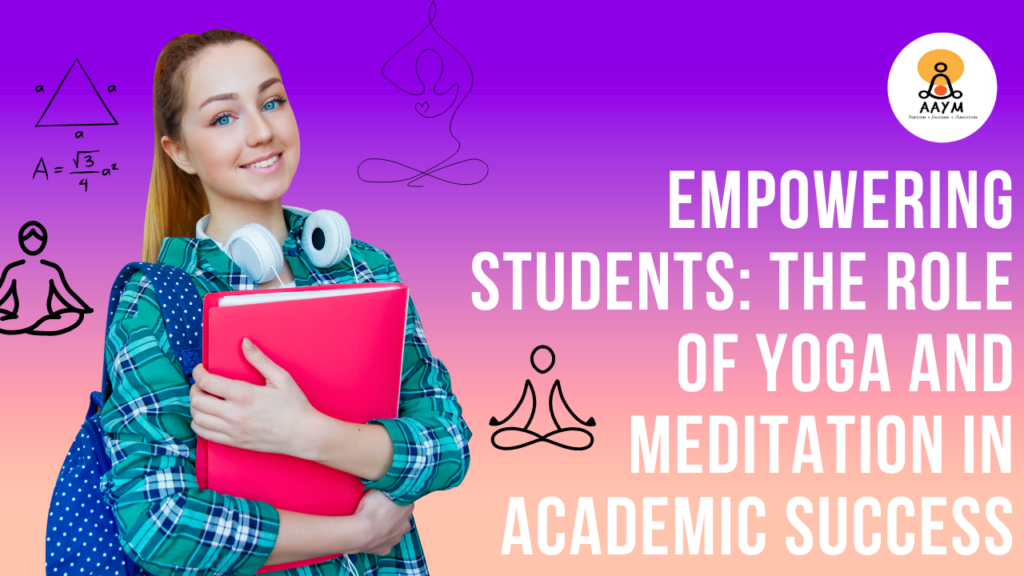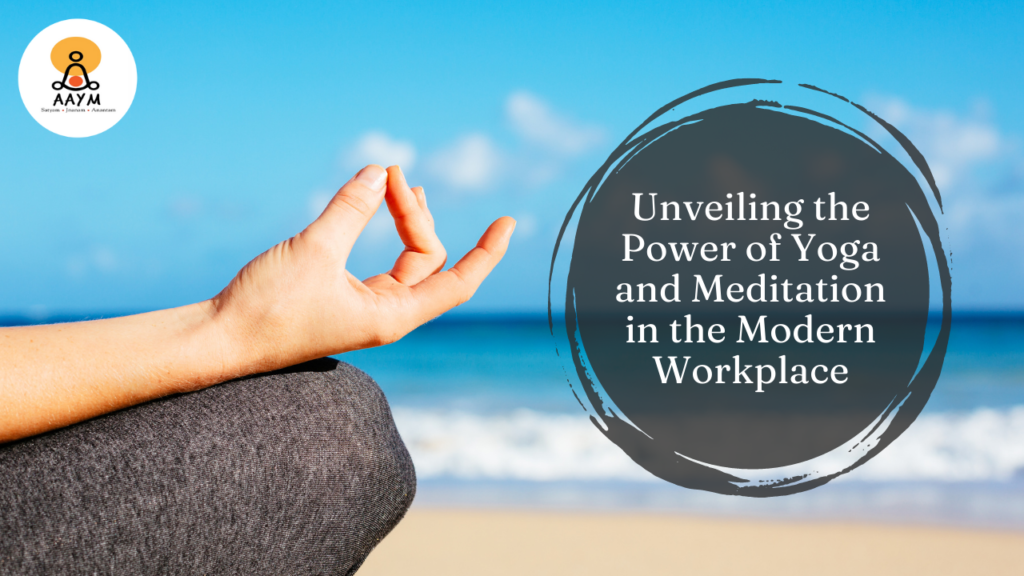Empowering Students: The Role of Yoga and Meditation in Academic Success
Introduction: The Modern Academic Landscape The academic world has evolved dramatically over the past few decades. With the advent of technology, globalization, and increased competition, students today face a myriad of challenges. These challenges, while fostering growth, often lead to stress, anxiety, and other mental health issues. Amidst this backdrop, the ancient practices of yoga and meditation have emerged as potential saviors, offering students tools to navigate their academic journey with resilience and balance. The introduction of these practices in the West, their growing popularity among all age groups, and the increasing number of institutions incorporating them into their curricula underscore their significance. Understanding the Stressors of Student Life The life of a modern student is not just about attending lectures and taking exams. It’s a whirlwind of activities, from extracurriculars, internships, part-time jobs, to maintaining a social life and planning for the future. These multifaceted responsibilities, while enriching, can also be overwhelming. Academic Pressures From the moment students begin their educational journey, they are met with expectations. Parents, teachers, and even peers set benchmarks, often pushing students to strive for excellence. The weight of these expectations can be heavy. As they progress, the academic rigors intensify. Projects, assignments, group tasks, and exams become a constant part of their daily routine. The fear of underperforming or not meeting the set standards can lead to sleepless nights and anxiety. Extracurricular and Work Commitments While academics are paramount, students today are also expected to be all-rounders. Colleges and employers look for individuals who have diverse skills. This pushes students to take up extracurricular activities, be it sports, arts, or any other field. Balancing these with their studies becomes a tightrope walk. Furthermore, the rising costs of education compel many to take up part-time jobs. These jobs, while providing financial relief, add another layer of responsibility, often leading to long, exhausting days. Social and Personal Challenges The college years are formative. It’s a phase where students form lifelong friendships, explore their identity, and make pivotal life decisions. The desire to fit in, the fear of missing out, and the challenges of building and maintaining relationships add to their stress. In the age of social media, these pressures are amplified. Every moment is under scrutiny, and the constant comparison with peers can lead to feelings of inadequacy. Seeking Solutions and the Role of Yoga and Meditation With mounting pressures, it’s imperative for students to find avenues for relief and relaxation. This is where ancient practices like yoga and meditation come into the picture. They offer a refuge from the chaos, a place of solace. The review on the role of yoga and meditation underscores their potential in alleviating the negative emotions rampant among students. By practicing mindfulness, students can gain better control over their thoughts, emotions, and reactions, leading to a more balanced and fulfilling academic journey. Yoga: Beyond Physical Flexibility Yoga is not just about twisting the body into complex postures. It’s a holistic practice that integrates the mind, body, and spirit. For students, yoga offers a sanctuary from the relentless pace of academic life. The physical postures or asanas help combat the sedentary lifestyle, while the breathing exercises or pranayama offer mental clarity. But how does this translate to academic success? The article from Greater Good Magazine provides insights into how yoga can enhance attention, memory, and even improve grades. This section will further delve into the history of yoga, its various forms, and how each can benefit students differently. Meditation: Cultivating a Focused Mind In a world riddled with distractions, maintaining focus is a challenge for many students. Meditation, with its emphasis on mindfulness and awareness, offers a solution. It teaches students to anchor their attention, filter out distractions, and approach tasks with a calm mind. The benefits extend beyond academics, fostering emotional intelligence, empathy, and resilience. The study on goal meditation underscores the profound impact of meditation on self-efficacy and overall well-being. We’ll also explore the different forms of meditation, their origins, and how they can be incorporated into a student’s daily routine. The Science Behind Yoga and Meditation in Academia While anecdotal evidence abounds, it’s the scientific research that lends credibility to the benefits of yoga and meditation in academia. Numerous studies have delved into this, exploring the physiological, psychological, and cognitive effects of these practices on students. The study exploring the impact of yoga and meditation and the research on yoga’s role in enhancing well-being provide compelling evidence of their positive impact. This section will further delve into the methodologies of these studies, the global perspective on this research, and the potential future studies in this area. Implementing Yoga and Meditation in Educational Institutions The integration of yoga and meditation into the academic setting isn’t merely a wellness initiative; it’s a paradigm shift in how student well-being is perceived and prioritized. The American Academy for Yoga in Medicine (AAYM) is pioneering this movement, advocating for the holistic integration of these practices across diverse educational landscapes. Their extensive resources, including webinars and blogs, furnish invaluable insights into both the scientific and pragmatic facets of yoga and meditation. For those interested in the specific benefits of yoga for children, AAYM offers a comprehensive article detailing how yoga can help children manage stress and enhance self-regulation. Embracing Mindfulness: The Future of Holistic Education As the educational landscape evolves, there’s a palpable shift towards holistic development. The focus is not just on grades but on producing well-rounded individuals equipped to navigate the complexities of the modern world. Yoga and meditation, with their myriad benefits, are at the forefront of this revolution, promising a future where academic success is intertwined with mental, emotional, and physical well-being. This concluding section will explore the future implications of this shift, the potential global movements towards holistic education, and the role of educators, institutions, and policymakers in this evolution.
Empowering Students: The Role of Yoga and Meditation in Academic Success Read More »







